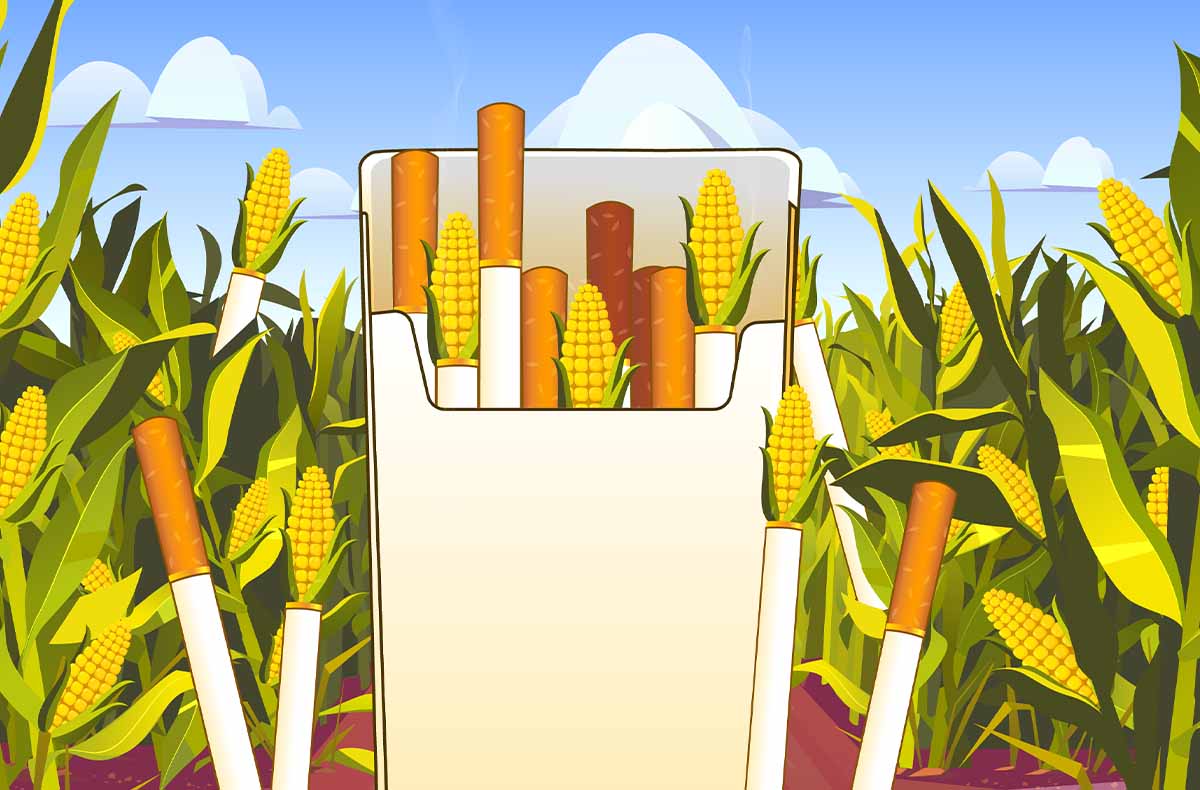
Illustration by Sarameeya Aree
For a teenager in suburban Minnesota during the early 2000s, a common weekend activity consisted of driving around aimlessly while smoking cigarettes. Today, I’m a bit more cautious with my money and health, and I prefer not to think about how often we did those things. My friends and I probably should have found more constructive ways to pass the time, though good luck suggesting that to a bunch of 16-year-olds who grew up in a culture that celebrates consumption as the ultimate expression of freedom.
I got my driver’s license as the U.S. invasion of Iraq was ossifying into an occupation. But Western control of the Middle East’s oil supply was still proving elusive, and “energy independence” was the political buzzword du jour. The terrorists weren’t content with crashing airplanes into buildings; now, they were extorting hardworking families at the pump. “Don’t look now, but $2 gas is here,” wailed a CNN headline.
Local news milked the crisis, as local news usually does. Suddenly, filling up the F-150s and Suburbans that dominated Minnesotan parking lots was costing an arm and both legs. Imagine forking over $60 to fill up your 30 gallon (114 liter) tank! People were distraught. But good old-fashioned American ingenuity soon galloped to the rescue.
Forget drilling for oil—what if we could grow our own gas?
The first time I heard the word “ethanol” was in a TV news story about a Minnesotan gas station that was selling a new miracle fuel for just 85 cents a gallon. The promotion was a nod to the fuel’s name, E85, which was a blend of 15 percent gasoline and 85 percent corn-derived ethanol. This was natural, organic, biological… and it was ours. Minnesota might not have any oil fields, but it does have around 8 million acres of corn.
So if ethanol took over the fuel industry, not only would drivers save big money, but Minnesotan businesses would make big money, too. It would keep those hard-earned American dollars in America and out of the pockets of shadowy Middle Eastern cartels. The news reports were full of experts proclaiming that ethanol was not only cheaper and more ethical than gasoline, but it burned cleaner too. What wasn’t to like?
The only catch at the time was that ethanol could only be used in “flex fuel” vehicles, which had come out just a few years before. The first batch of flex-fuel vehicles were high-end models, or at least beyond the price range of semi-employed teenagers.
This injustice was a frequent topic of conversation among my friends and I. As we drove through the weird, half-developed Minnesotan exurbs—where the charmless mansions of sports celebrities loomed above the dying prairie, and fume-shrouded stars glowed above the massive landholdings of industrial agriculture—we would often burn through a pack of Marlboros apiece, griping at the injustice of being unable to afford the cheaper product.
The smokes were getting more expensive, too. In 1998, the state of Minnesota settled a $6.5 billion lawsuit with tobacco companies. It was billed as a huge win for public health, with those companies forced to (among other things) write huge checks to the government and advertise against using their own products. My friends and I were mostly just annoyed because the price went up by around $1 per pack.
Around the same time, I had to give up my beloved Marlboro Reds. Known as “cowboy killers,” Reds were a cigarette for manly men. Unfortunately, I was just a scrawny kid with asthma. In search of smokes that wouldn’t upset my delicate constitution, I switched over to Marlboro Lights. With their company’s reputation for quality and their clean, pristine packaging—white like a doctor’s lab coat—Lights promised the best of both worlds. I could keep smoking but stop wheezing after each hit.
Now that you’ve indulged this little jaunt down memory lane let’s see where things stand today.
The market for tobacco in Minnesota isn’t what it used to be, with the percentage of adults who smoke dropping from around 22 percent of adults at the time of the lawsuit to just under 14 percent by 2018, according to the Minnesota Department of Health.
Marlboro Lights are no longer Marlboro Lights, either. Back in 2010, tobacco companies were forbidden from marketing their products as “light,” because it turns out a lot of people were just as susceptible as I was. Now they’re known as Marlboro Golds, and their once all-white packaging reflects the update. (Reasonable people may disagree on whether adding the international symbol for luxury to the color palette was what regulators had in mind, but c’est la vie.)
E85 has taken a reputational hit as well. As detailed in a 2021 piece from the Bulletin of Atomic Scientists, ethanol has been a disaster in almost every way possible. It turns out that the industry-backed experts who’d sung its praises so loudly were just lying through their teeth the whole time.
The widespread adoption of ethanol has failed to improve air quality, failed to reduce the country’s thirst for oil, and failed to create jobs. The only reason it’s still around is because one of George Bush’s few legislative accomplishments was mandating increased production of “renewable fuels,” a stance that has received strong bipartisan support ever since. This phenomenon might have something to do with the deep-pocketed ethanol lobby spending upwards of $60,000 a day to buy political influence.
Today, biofuels are once again “having a government-funded moment,” as Popular Science put it. The prospect of making precious go-go juice from whatever junk is lying around—be it cellulose, algae, or even plastic waste—has never really lost its appeal. This is what modern-day alchemy looks like.
But for all the breathless TED Talks about self-powered airplanes and miracle microorganism power ponds, and for all the hundreds of “climate tech startups” that are perpetually poised on the verge of world-changing breakthroughs (with just a little more seed capital bro, just one more round of funding, just a tiny bump they swear), a biofuel that isn’t a scam remains as elusive as the philosopher’s stone.
Humans can make biofuels that are expensive and inefficient. We can make biofuels that cause astronomical rates of cancer. We can (and often do) even make biofuels that are not “bio” in a meaningful sense at all.
But just as we can’t make cigarettes healthier by changing their branding, we can’t make an energy source renewable by giving it a name that evokes trees and flowers. If we’re going to solve the climate crisis, we need to kick the biofuel habit.



